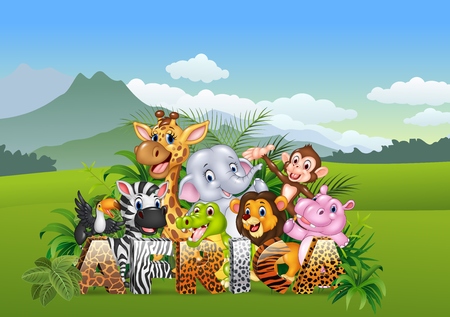Understanding Your Small Pet’s Needs
When it comes to creating a stimulating environment for your small pet, everything starts with understanding their unique needs. Small pets—like hamsters, guinea pigs, rabbits, and mice—each have natural behaviors, instincts, and preferences shaped by their wild ancestors. By exploring what makes your pet tick, you can offer a home that genuinely supports their well-being. For instance, many rodents love to burrow, chew, and explore, while rabbits enjoy hopping and digging. Recognizing these tendencies helps you choose the right bedding, toys, and enrichment activities. Take time to observe how your pet interacts with their surroundings; do they seek hiding places, climb on objects, or show curiosity about new items? These observations are key. Meeting your small pet’s instinctual needs isn’t just about comfort—it’s about encouraging healthy activity and preventing boredom or stress-related behaviors. The more you learn about your pet’s background and natural habits, the better equipped you’ll be to create an environment where they can thrive.
2. Safe and Engaging Habitat Design
Designing a safe and stimulating habitat is essential for the well-being of small pets like hamsters, guinea pigs, rabbits, or mice. The right enclosure layout encourages exploration, supports natural behaviors, and keeps your pet comfortable and secure. Start by choosing a cage or enclosure that offers enough space for movement—always aim for larger than the minimum recommended size to promote activity.
Arranging the Space for Exploration and Comfort
Think of your pet’s enclosure as their own mini ecosystem. Divide the habitat into zones: an active play area, cozy hideaways, a feeding station, and a spot for litter or bedding. Use tunnels, platforms, ramps, and chew-safe toys to make each zone accessible and interesting. Mixing up textures—like wood bridges, paper bedding, and soft fleece—adds sensory variety that keeps pets curious.
Essential Elements for a Stimulating Habitat
| Habitat Feature | Purpose | Recommended Materials |
|---|---|---|
| Hideouts | Privacy & Security | Wooden houses, cardboard boxes |
| Tunnels & Ramps | Exercise & Exploration | PVC tubes, untreated wood |
| Bedding Area | Nesting & Comfort | Paper bedding, hay, fleece liners |
| Toys & Chews | Mental Stimulation & Dental Health | Apple sticks, cardboard rolls, pet-safe blocks |
| Food & Water Station | Nourishment & Cleanliness | Ceramic bowls, water bottles with sipper tubes |
Prioritizing Safety and Easy Maintenance
Select materials that are non-toxic and sized appropriately to prevent escape or injury. Avoid sharp edges or gaps where tiny paws could get caught. For easy cleaning, use removable trays or liners at the bottom of the enclosure and organize accessories so they can be quickly swapped out or disinfected. Place the habitat in a draft-free area away from direct sunlight to maintain a stable environment for your pet.
![]()
3. Enrichment Through Toys and Accessories
Providing a range of toys and accessories is one of the best ways to keep small pets mentally stimulated and happy. In the U.S., pet owners have access to a huge variety of enrichment products designed specifically for animals like hamsters, guinea pigs, rabbits, and mice.
Popular Toy Options
Classic toys such as exercise wheels (for hamsters and mice), wooden chew sticks, and colorful balls are staples in many American households with small pets. These toys not only encourage physical activity but also help satisfy natural instincts like chewing and foraging.
Tunnels and Hideaways
Tunnels made from plastic, cardboard, or fabric offer small pets places to explore, hide, and play. These accessories tap into their natural burrowing behaviors while providing a safe space to retreat when they need quiet time. Many U.S. pet stores sell modular tunnel systems that can be rearranged to create new experiences, keeping pets curious and engaged.
Chewables for Dental Health
Chewable items like apple wood sticks, hay cubes, or loofah chews support healthy teeth and prevent boredom. Since many small pets teeth grow continuously, offering safe chewables is both enriching and necessary for their health.
Interactive Accessories
Puzzle feeders, treat-dispensing balls, and climbing structures are increasingly popular among American pet owners who want to challenge their pets’ minds. These items encourage problem-solving skills and make feeding time more engaging.
Selecting a mix of these toys and accessories—rotating them regularly—ensures your small pet always has something new to discover. By investing in enrichment products tailored to your pet’s species and personality, you’ll help prevent boredom-related behaviors and nurture a happier, healthier companion.
Interactive Playtime and Bonding
Integrating interactive playtime into your daily routine is one of the most rewarding ways to create a stimulating environment for your small pet. Hands-on interaction not only encourages physical activity, which is essential for your pet’s health, but it also helps build trust and nurtures a strong bond between you and your furry friend. Whether you have a curious hamster, a playful rat, or an energetic rabbit, dedicating time each day to play can make a big difference in their overall well-being.
Start by observing your pet’s preferences and energy levels throughout the day. Some pets are more active in the morning or evening, so try to schedule play sessions when they are most alert. Use a variety of toys, such as tunnels, balls, ropes, or chew toys, and rotate them regularly to keep things interesting. For prey animals like guinea pigs or chinchillas, gentle games that mimic natural behaviors—like foraging or exploring—can be especially engaging.
Building trust takes patience and consistency. Let your pet approach you at their own pace, offering treats as positive reinforcement for calm behavior. Speak softly and move slowly to avoid startling them. Over time, your pet will begin to associate your presence with safety and enjoyment, strengthening your relationship.
| Tip | How It Helps |
|---|---|
| Use Treats During Play | Encourages positive associations with hands-on interaction |
| Create Obstacle Courses | Stimulates mental and physical activity |
| Daily Handling | Increases comfort and reduces stress during care routines |
| Rotate Toys Weekly | Prevents boredom and sparks curiosity |
| Respect Their Boundaries | Builds trust over time without overwhelming your pet |
The key to successful interactive playtime is consistency. Even 10-15 minutes each day can make a noticeable difference in your pet’s mood and confidence. Remember that every small animal has its own personality; some may warm up quickly while others need extra patience. By making interactive bonding part of your regular routine, you help ensure your small pet feels secure, loved, and mentally stimulated every day.
5. Rotating Activities to Prevent Boredom
Small pets, like hamsters, guinea pigs, and rabbits, are naturally curious and intelligent. Just like us, they can get bored if their environment never changes. That’s why it’s essential to understand the importance of variety when it comes to keeping your small pet engaged and happy. Rotating toys, games, and challenges is one of the simplest and most effective ways to create a stimulating environment that keeps your pet’s mind active.
Why Variety Matters
Imagine if you had to watch the same TV show or play the same game every day—it would get old pretty fast! The same goes for your small pet. When you switch up their activities regularly, you help prevent boredom-related behaviors like chewing on cage bars or repetitive pacing. Mixing things up also encourages natural instincts like foraging, exploring, and problem-solving.
Easy Ways to Rotate Toys
You don’t need a massive collection of toys to make a difference. Try keeping a few different types of toys on hand—such as tunnels, chew sticks, balls, or climbing platforms—and swap them out every few days. Even moving toys to different locations within your pet’s habitat can make old items feel new again. This simple routine can spark curiosity and excitement in your furry friend.
Switch Up Games and Challenges
Beyond toys, think about introducing new games or challenges. Hide treats in different spots or use puzzle feeders that require your pet to work for their food. Rearranging their enclosure by changing the layout of tunnels or adding cardboard boxes can also give them something fresh to explore. Always supervise any new activity at first to ensure it’s safe and appropriate for your specific pet.
Keep Track of Favorites
Every pet has their preferences. Pay attention to which toys and activities your pet enjoys most, and be sure to rotate those back in more often. This personalized approach not only keeps things interesting but also shows your small pet that you care about what makes them happy.
By regularly rotating activities, you’ll help nurture a lively, contented companion while creating a home that supports their mental well-being. Remember, a little creativity goes a long way in making each day exciting for your small pet!
6. Environment and Enrichment on a Budget
Creating an engaging environment for your small pet doesn’t have to break the bank. In fact, some of the best enrichment ideas come from everyday household items and a little bit of creativity. With a DIY spirit, you can upgrade your pet’s habitat in ways that are both fun and affordable.
Repurposing Common Household Items
Look around your home—chances are, you already have materials that can be transformed into exciting additions for your pet’s space. Cardboard boxes make excellent tunnels or hideouts for hamsters, gerbils, and rabbits. Empty toilet paper rolls can be cut and stuffed with hay or treats to encourage natural foraging behaviors. Even old socks (washed and clean) can become cozy nests or chew toys when tied in knots for small rodents.
DIY Projects for Extra Fun
If you’re handy with simple tools, try building a small climbing structure using untreated wood scraps, or create a digging box filled with safe substrate like shredded paper or coconut fiber. For birds, string together colorful bottle caps or wooden beads to make homemade toys. Ferrets love exploring; connect a few cardboard tubes or PVC pipes to create a maze they’ll adore.
Safe and Stimulating Choices
No matter what you repurpose or create, always ensure items are non-toxic and free from sharp edges or loose parts that could be swallowed. Avoid anything with glue, paint, or other chemicals unless labeled pet-safe. Cleaning all DIY items before use keeps your pet healthy and happy.
Rotate and Refresh
You don’t need dozens of toys at once—instead, rotate different items in and out of your pet’s habitat every week. This keeps things interesting without needing to constantly buy new products. Observing which DIY projects your pet enjoys most can help you refine their environment over time.
Enriching your small pet’s life is about thoughtful engagement more than expensive gear. With some imagination and care, you can provide a stimulating home where your furry friend thrives—all while staying within your budget.


